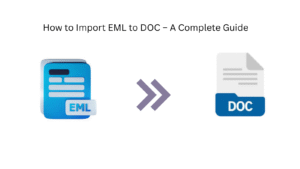
Retailers face a relentless barrage of cyber threats, from sophisticated malware campaigns to insider threats and point-of-sale (POS) system compromises. In an era where a single breach can erode customer trust, damage brand reputation, and result in millions of dollars in fines and losses, proactive security strategies are more important than ever. One technology rising to the forefront of retail cybersecurity is Network Detection and Response (NDR).
NDR solutions monitor network traffic in real time, using advanced analytics and AI to detect suspicious behaviors that traditional security tools may miss. For retailers that handle massive volumes of sensitive customer data, including payment card information, NDR is becoming a critical component in defending against data breaches and credit card fraud.
The Rising Threat Landscape in Retail
Retailers are attractive targets for cybercriminals due to the vast amount of personally identifiable information (PII) and credit card data they process. Common threat vectors include:
-
POS malware that skims card data during transactions.
-
Credential stuffing attacks leveraging stolen usernames and passwords.
-
Phishing campaigns targeting employees with access to internal systems.
-
Supply chain attacks where vulnerabilities in third-party vendors are exploited.
-
Insider threats from disgruntled or negligent employees.
According to the 2024 Verizon Data Breach Investigations Report, retail was among the top five industries targeted by cybercriminals, with financially motivated attacks making up over 90% of incidents. These attacks are not only frequent—they’re also increasingly stealthy and sophisticated.
Traditional Defenses Fall Short
Many retailers rely on a combination of firewalls, antivirus, intrusion prevention systems (IPS), and Security Information and Event Management (SIEM) platforms. While these tools are important, they often have blind spots:
-
Limited visibility into east-west (internal) traffic.
-
Inability to detect unknown threats or zero-day exploits.
-
Alert fatigue due to high false positive rates.
-
Slow response times when incidents occur.
Retail environments also feature a wide array of endpoints—POS terminals, mobile devices, IoT sensors, and cloud-connected systems—which makes maintaining consistent visibility and control a significant challenge.
Enter NDR: A Proactive Security Layer
NDR offers retailers a way to see what other tools can’t. By continuously analyzing all network traffic—north-south (external) and east-west (internal)—NDR provides a deep, contextual understanding of network behaviors. Here’s how NDR helps prevent breaches and credit card fraud:
1. Real-Time Threat Detection
NDR systems use machine learning and behavioral analytics to establish a baseline of normal activity across the retail network. When deviations occur—such as a POS terminal suddenly communicating with an unknown IP address overseas—NDR triggers alerts based on actual anomalies, not signatures. This enables rapid detection of:
-
Lateral movement of attackers.
-
Suspicious data exfiltration.
-
Communication with known command-and-control (C2) servers.
2. Early Detection of Credit Card Skimming
POS malware is specifically designed to be stealthy. It often hides in memory or mimics legitimate processes. NDR can spot unusual network behaviors from infected POS devices—such as unusual DNS requests or large data transfers during off-hours—providing early indicators of compromise.
3. Protection Against Insider Threats
NDR can also detect unauthorized access or data misuse by employees. For instance, if an employee suddenly accesses large volumes of credit card data outside normal working hours or tries to transfer it off-network, NDR flags the behavior for investigation.
4. Contextual Alerts and Threat Correlation
Unlike SIEM tools that bombard analysts with raw logs and isolated alerts, NDR provides enriched, contextualized alerts with correlated threat activity. This dramatically reduces response time and helps analysts understand the full scope of an incident.
5. Forensics and Incident Response
When a breach occurs, time is critical. NDR solutions log all relevant traffic data, providing detailed insights for forensic investigations. This includes:
-
Identifying the initial point of entry.
-
Mapping attacker lateral movement.
-
Determining data exfiltration paths.
Having this visibility shortens the containment and recovery time significantly.
6. Compliance and Reporting
Retailers are subject to PCI DSS and other regulatory requirements. NDR can assist by:
-
Demonstrating continuous monitoring and threat detection.
-
Providing logs and evidence for audits.
-
Ensuring data retention for forensic purposes.
Retail Use Case: Stopping a POS Attack in Real Time
Consider a scenario where a retail chain’s NDR solution detects that a POS terminal at a midwestern store has started sending encrypted data to an unrecognized domain at 2 a.m. The NDR system immediately flags this as anomalous based on the device’s normal behavior profile. Within minutes, the system automatically isolates the terminal and notifies the security team.
Upon investigation, the team discovers a previously unknown malware variant installed on the terminal via a compromised third-party update. Thanks to the NDR alert, the breach was contained before any customer data was stolen, and the malware was added to the threat database to prevent future incidents.
Integrating NDR Into the Retail Security Stack
NDR is not a silver bullet but a vital piece of a multilayered defense. To maximize its effectiveness, retailers should integrate NDR with:
-
SIEM platforms to correlate alerts and centralize visibility.
-
Endpoint Detection and Response (EDR) tools to detect threats on individual systems.
-
Threat intelligence platforms (TIPs) to enrich NDR findings with external data.
This combination creates a synergistic security environment where threats can be detected earlier, understood more clearly, and responded to more effectively.
Final Thoughts
Retailers must adapt to the evolving threat landscape by embracing technologies that provide deeper visibility and faster response. Network Detection and Response empowers security teams to detect subtle anomalies, uncover hidden threats, and stop attackers in their tracks—before customer data is compromised.
As cyberattacks grow more advanced and regulatory scrutiny increases, NDR is not just a nice-to-have; it’s a critical component of any modern retail cybersecurity strategy. By investing in NDR now, retailers can protect their brand, their customers, and their bottom line.




